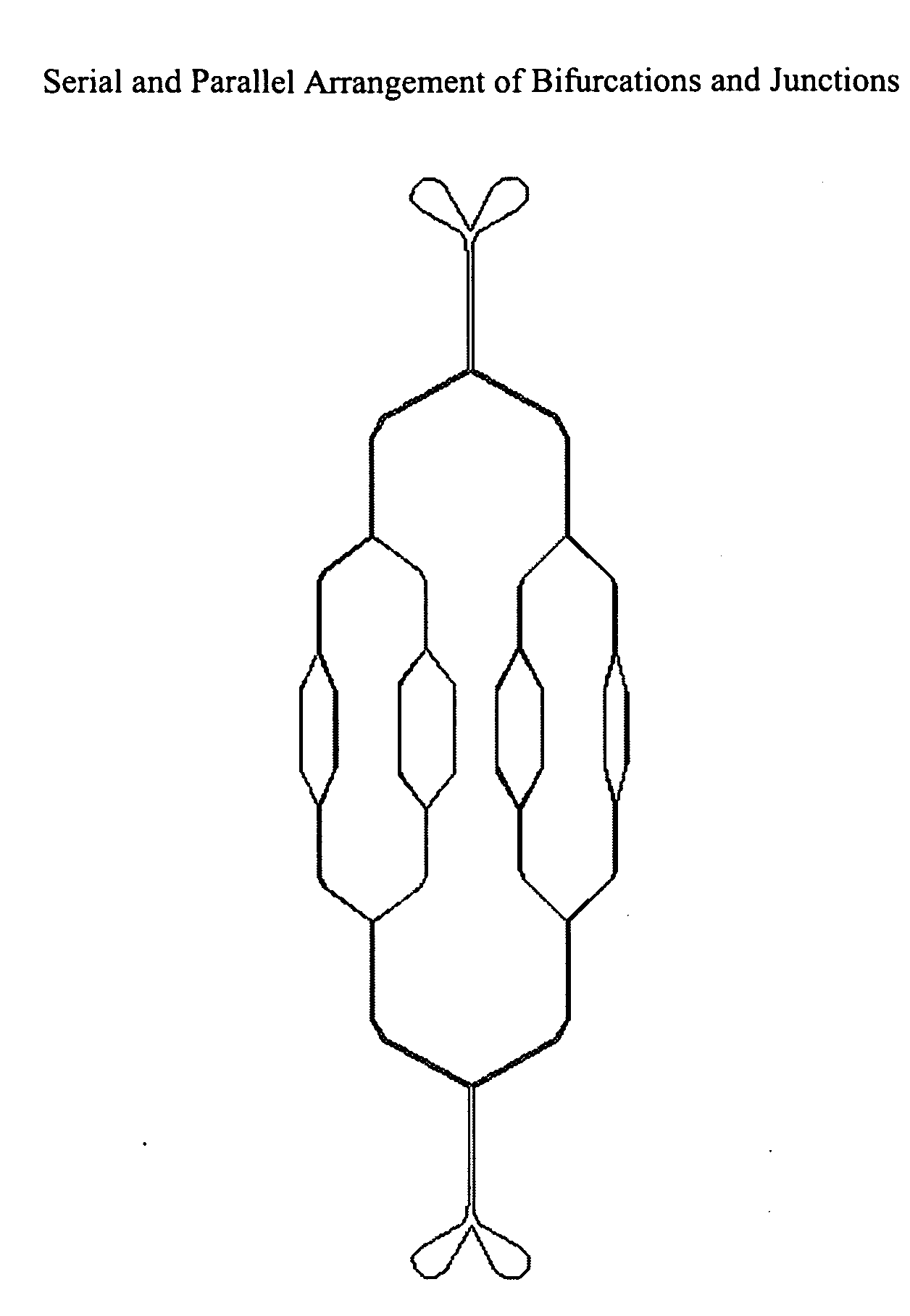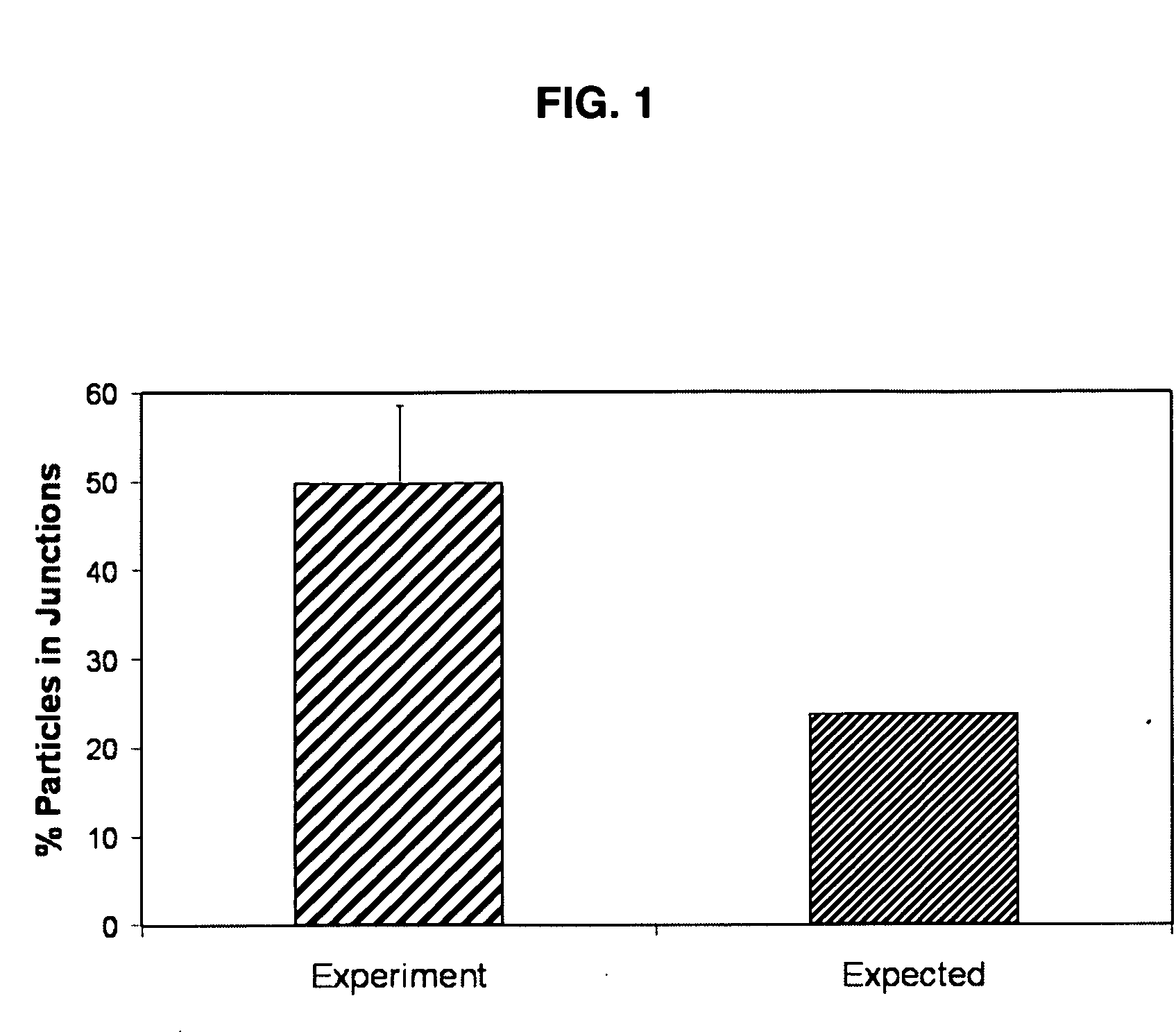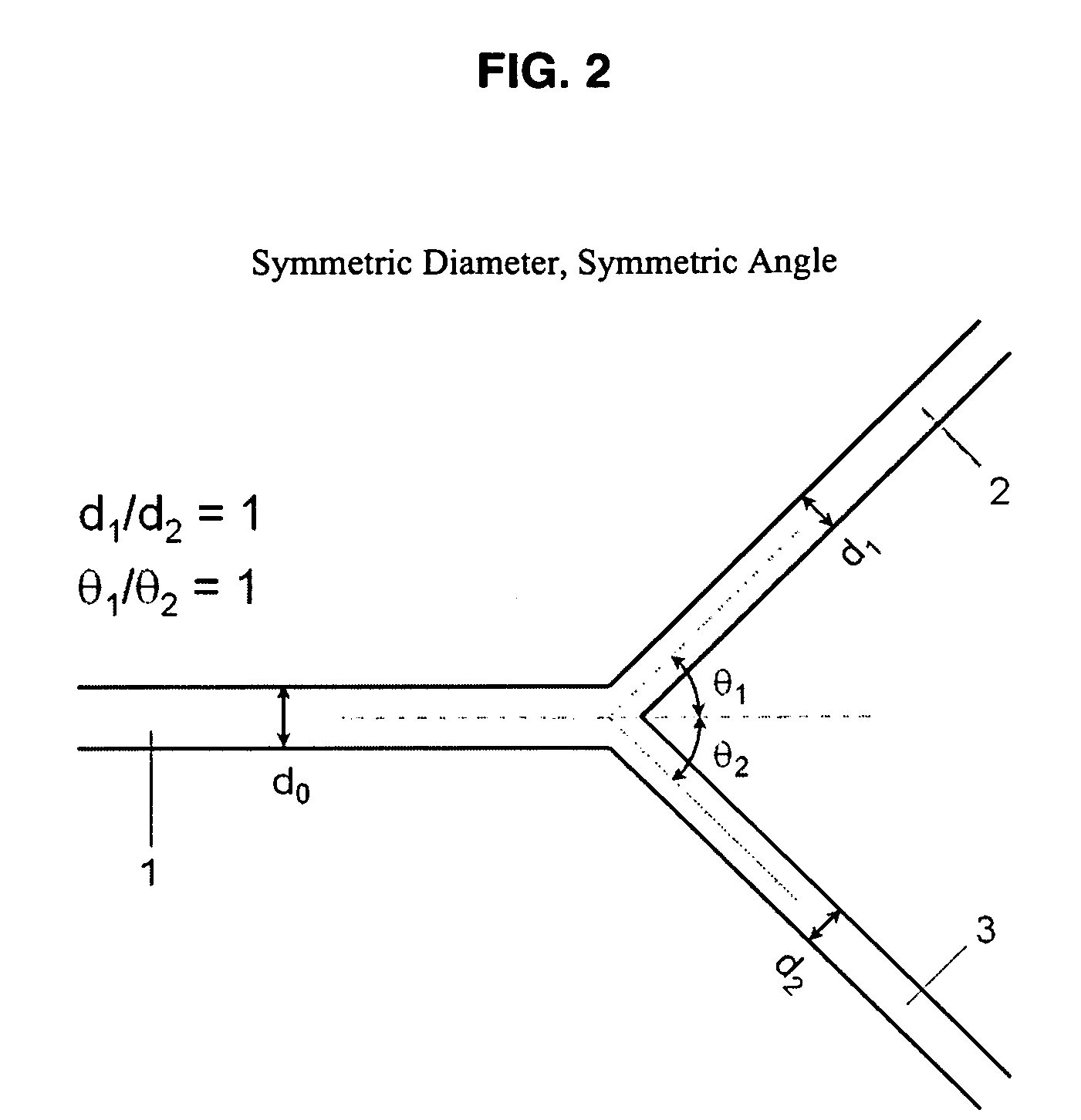Particle Adhesion Assay for Microfluidic Bifurcations
a technology of bifurcation and particle adhesion, which is applied in the field of microfluidic devices and particle adhesion in biological microcirculation, can solve the problems of inability to predict, incomplete understanding of the complex interplay between flow, cells and particles, and inability to predi
- Summary
- Abstract
- Description
- Claims
- Application Information
AI Technical Summary
Problems solved by technology
Method used
Image
Examples
example
Particle Uptake Study on Channels Coated with Cultured Cells
[0048]A cell culture matrix comprising gelatin and fibronectin is injected into an idealized bifurcation along with the desired cell culture medium at a flow rate of 10 ul / min for 10 min. The network chip is then kept in a cell culture incubator for 2-4 hours. Cells at concentrations ranging from 1×103 / ml to 1×107 / ml are introduced into the chip using the syringe pump. The cells are continuously perfused with media at shear rates of 3 / ml to 1×107 / ml encapsulating drugs / genes (e.g. luciferase, GFP), fluorescent tags (rhodmaine, FITC) or nanopolymers complexated with tagged drug are injected into the inlet channel at decreasing at shear rates ranging from 500 sec-1 to 7.5 sec-1. The particle solution can be flowed through in a loop or in a single pass fashion using a peristaltic pump or a syringe pump. Each shear rate experiment is performed on a new chip. Every 4 hours, an image is taken of the entire chip or of the key loca...
PUM
| Property | Measurement | Unit |
|---|---|---|
| width | aaaaa | aaaaa |
| width | aaaaa | aaaaa |
| angle | aaaaa | aaaaa |
Abstract
Description
Claims
Application Information
 Login to View More
Login to View More - R&D
- Intellectual Property
- Life Sciences
- Materials
- Tech Scout
- Unparalleled Data Quality
- Higher Quality Content
- 60% Fewer Hallucinations
Browse by: Latest US Patents, China's latest patents, Technical Efficacy Thesaurus, Application Domain, Technology Topic, Popular Technical Reports.
© 2025 PatSnap. All rights reserved.Legal|Privacy policy|Modern Slavery Act Transparency Statement|Sitemap|About US| Contact US: help@patsnap.com



